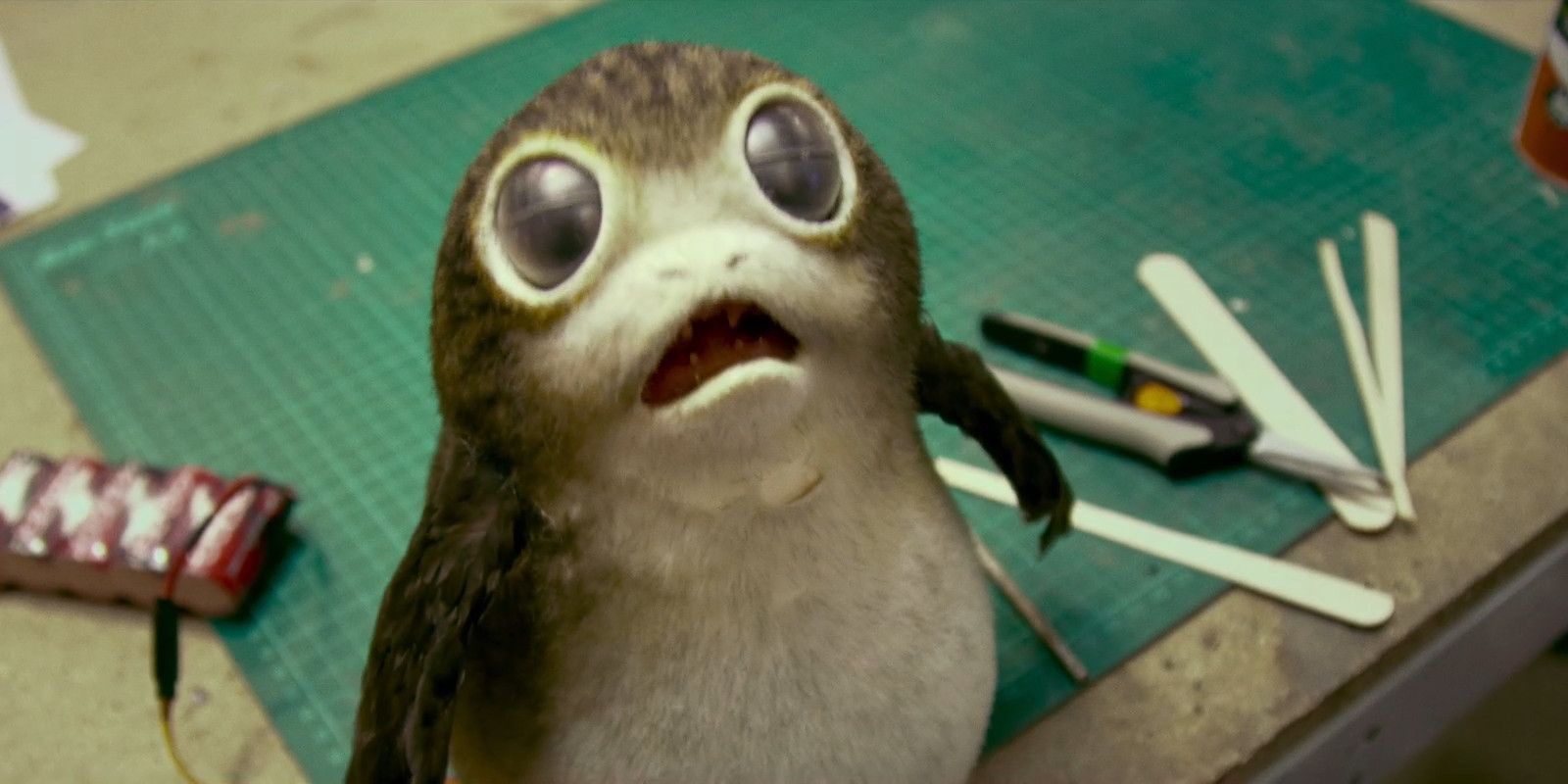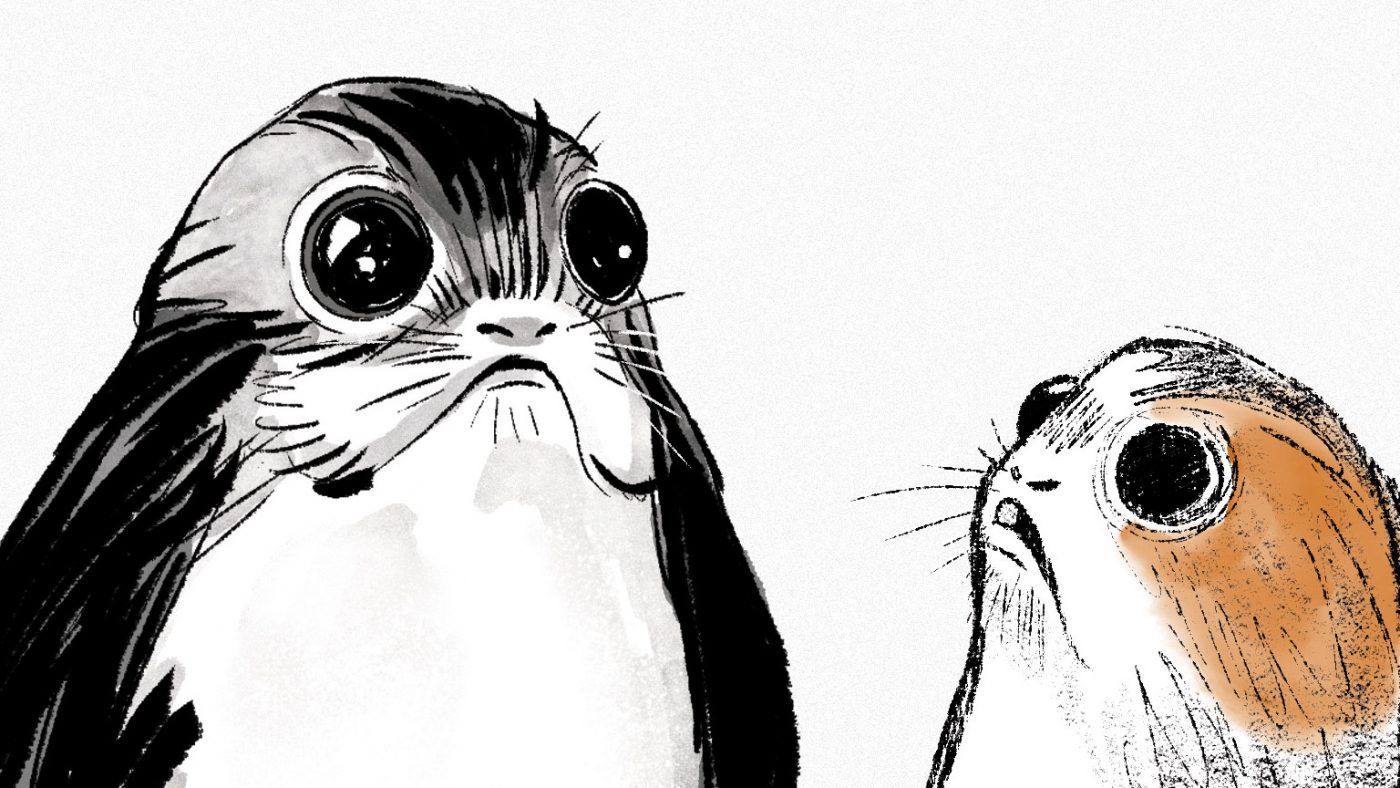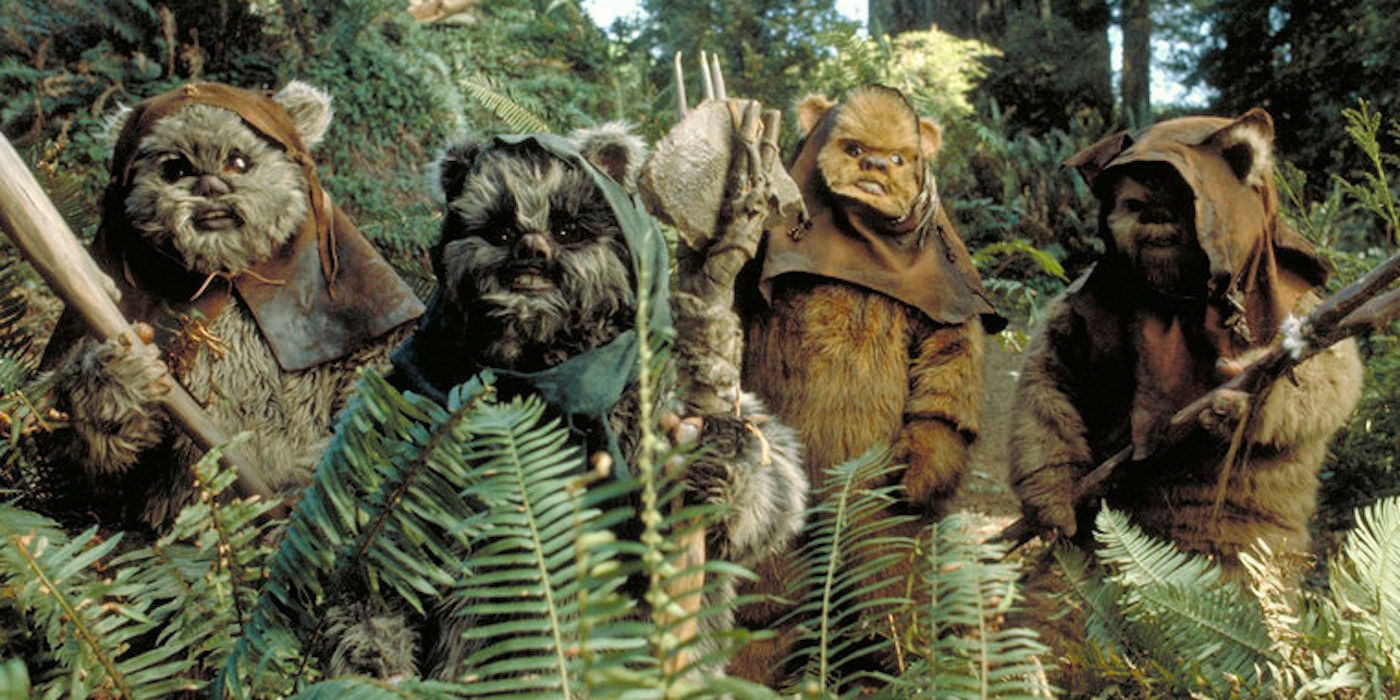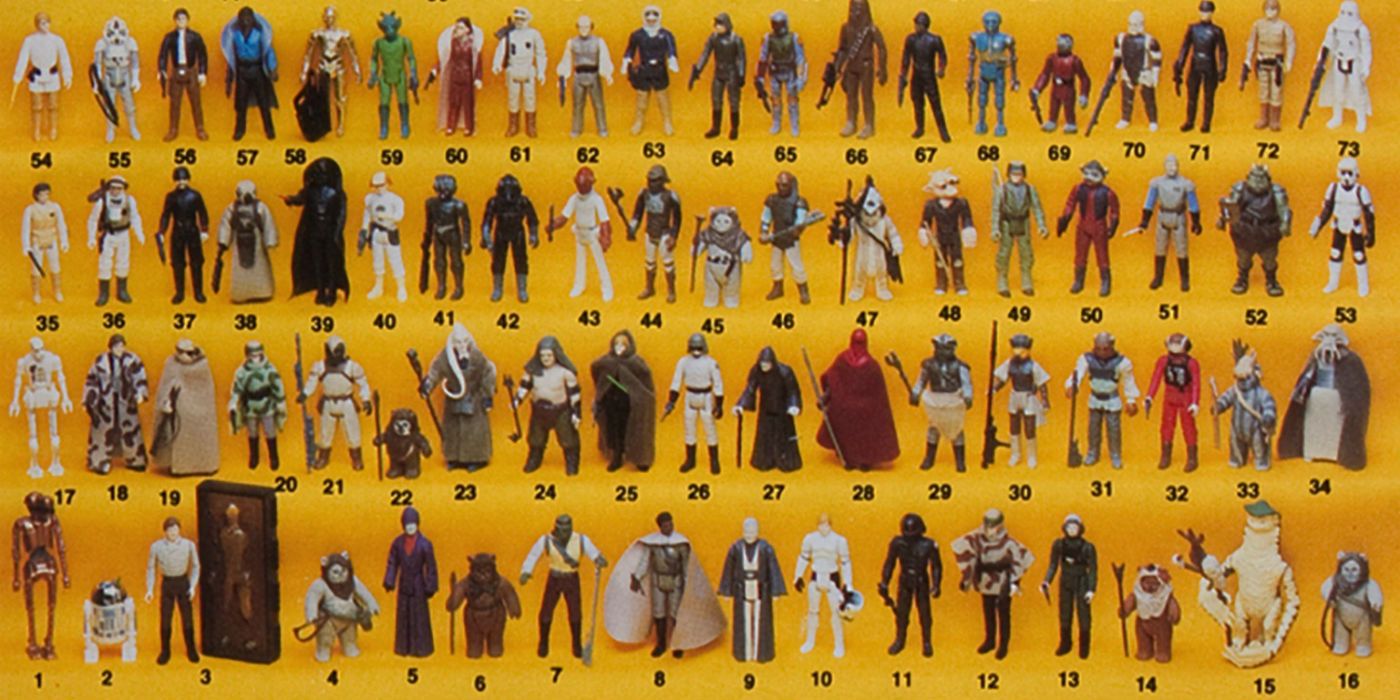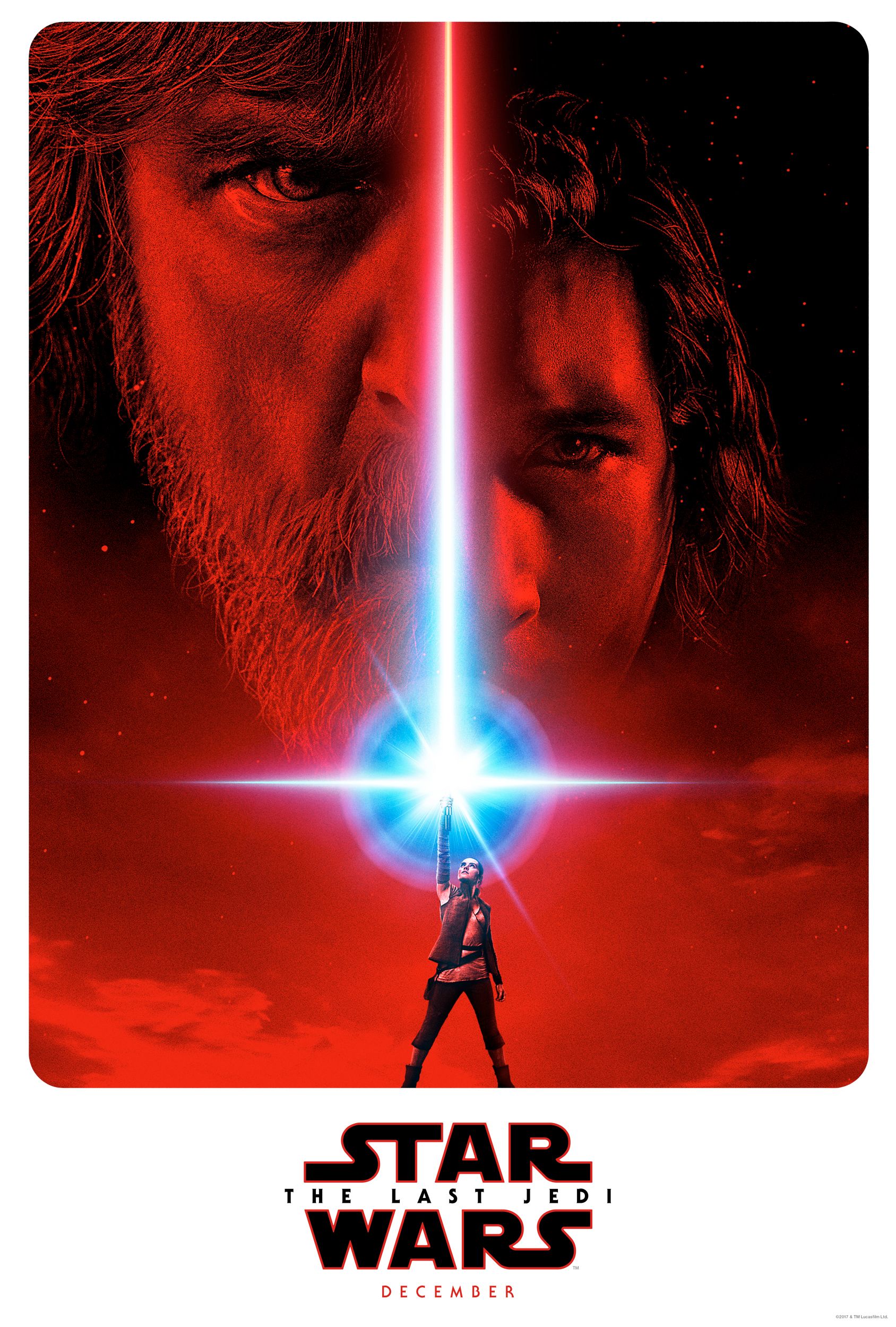After appearing briefly in the D23 Behind the Scenes reel for The Last Jedi , porgs had officially made their Star Wars debut. StarWars.com and the Star Wars social media channels confirmed much of the information which had been previously leaked by Making Star Wars earlier this year. These wide-eyed creatures live on the planet Ahch-To with Luke Skywalker, and will appear alongside Rey and R2-D2 in The Last Jedi. Pablo Hidalgo of the Lucasfilm Story Group after describing the porgs quipped:
Besides, porgs are cute. You fall into those deep, soulful eyes. I think a lot of people are going to want a porg as a pet.
Hidalgo also noted that the idea for porgs came directly from Rian Johnson, the director of The Last Jedi, but his interview still makes porgs sound like a shameless marketing ploy: they are adorable critters that can be put on t-shirts and sold as a variety of stuffed toys. Despite this, since the official announcement, the porgs have been met with a warm wave of enthusiasm from Star Wars fans on social media. The marketability of porgs does not seem to be lost on the fans who are singing their praises; in fact, a number of fans have expressed their excitement by talking about their desire to buy porg-themed products. But while porgs seem popular now, will they continue to capture fan's hearts or will they be viewed more cynically with time?
This is hardly the first time that Lucasfilm has been accused of pandering to fans (and especially children) in order to sell merchandise. It's one of the major criticisms that some fans have with the Ewoks, the race of fearsome teddy bears who somehow use their primitive technology to defeat stormtroopers in The Return of the Jedi . Likewise, a number of fans and critics had a similar problem with the prequel films, and especially with the character of Jar Jar Binks. Arguably, other creatures, such as the Opee Sea Killer in The Phantom Menace or the Nexu in Attack of the Clones were also added into the films to generate eye-catching toys for children. In all of these cases, the accusation is that some part of the movie (e.g. the Ewoks) exists because it appeals to children rather than actually contributing something worthwhile to the film. This debate of style over substance has plagued Star Wars fans for decades.
However, the ebb and flow of these debates shifts over time. The Ewoks, which were particularly vilified before the prequel trilogy, have become less controversial as fans who grew up with Ewoks (and perhaps Ewok toys) have come of age. Jar Jar Binks has not been so lucky. Before The Phantom Menace premiered, Jar Jar Binks was a prominent part of the marketing campaign for the new film. He was a central character and an example of cutting-edge digital technology, and so he appeared on a wide array of products and promotional material, including on the cover of Rolling Stone magazine with the caption "Jar Jar Superstar". But after the film was released, the backlash against Jar Jar was so severe that his part in the later two prequel films was reduced significantly.
Next Page: [valnet-url-page page=2 paginated=0 text='Porg%20Backlash%3F']
It's possible that porgs won't face backlash like Ewoks or Jar Jar Binks; after all, while BB-8 was a cutesy cash cow, the droid did not face the same negativity. BB-8 clearly appealed to children, but he also contributed to the story of The Force Awakens more than he detracted from it. The porgs seem to have quite a few parallels with the Ewoks; their big, round eyes make them an appealing product for children while their jagged teeth give them the potential to be ironically dangerous (don't forget - Ewoks eat people, and porgs might, too). Following that logic, it would seem that porgs might easily fall into the same pitfalls as the fuzzy bears from the moon of Endor. But if the porgs can offer viewers something more than adorable antics, then they may be remembered with the same fondness that fans reserve for R2-D2, BB-8, or even Yoda.
Star Wars has always been about the merchandise. After all, Star Wars merchandise sales dwarf box office sales consistently; George Lucas made his fortune not from cinemas but from licensing Star Wars products. Lucas even went as far to say in a 2015 interview, "All the money is in the action figures." Disney's acquisition of Lucasfilm seemed to only cement this philosophy, and The Force Awakens merchandise sales were no different. At the global box office, The Force Awakens made slightly over $2 billion dollars in ticket sales, making it the highest grossing film of all time (not adjusted for inflation). But The Force Awakens made even more money in merchandise. Star Wars toys made $700 million in 2015 alone (leading up to the film's release), and Star Wars merchandise reportedly made $3 billion in the first quarter of 2016. That number would only continue to grow into 2016, and even after The Force Awakens left theaters, merchandise for the film would continue to be sold, even alongside the new cycle of Star Wars products created for Rogue One (2016). A cynic might think that the Star Wars films are the longest and most expensive commercials ever made.
Given Star Wars' history as a merchandising pioneer and its current stronghold as a capitalistic powerhouse, every creative decision at some point or another becomes a "marketing ploy" because every character, every planet, and every creature is going to be made into countless products to be sold to fans. The line between "good" characters and creatures (like BB-8 or Yoda) and "bad" characters (like Ewoks) is difficult to quantify. When does something become pandering, and at what point does something become a "marketing ploy" instead of a good idea? Darth Vader is the most profitable character in the Star Wars universe. But the Sith Lord would never be described as a "marketing ploy", even though his inclusion in Rogue One helped to furnish a number of new Darth Vader products. On the contrary, a number of fans laud his inclusion at the Battle of Scarif as one of the highlights of the film.
The question isn't whether or not Star Wars is trying to sell you something (it definitely is), and so a character is not inherently bad if they are used to sell merchandise. Instead, fans should try to evaluate new characters and creatures based on what they add to the world of the film and the Star Wars universe as a whole.
In conclusion, if porgs are marketing ploys to sell products to fans, they're in good company in the Star Wars universe. The difference might be that if Star Wars fans are able to acknowledge that porgs are a marketing ploy and love them, then porgs may not face the same scrutiny as the Ewoks or Jar Jar Binks. It's impossible to know now if porgs will be remembered fondly or if their hype will fade into fan cynicism. Ultimately, the role that porgs play in The Last Jedi and whether or not they add something meaningful to the film will decide how fans remember them.

